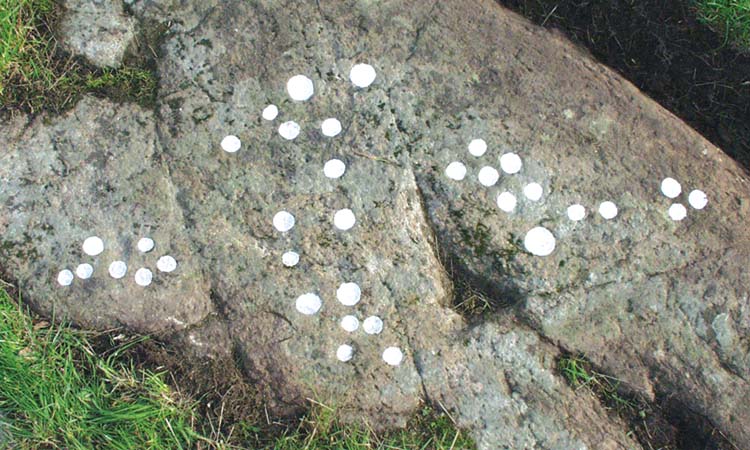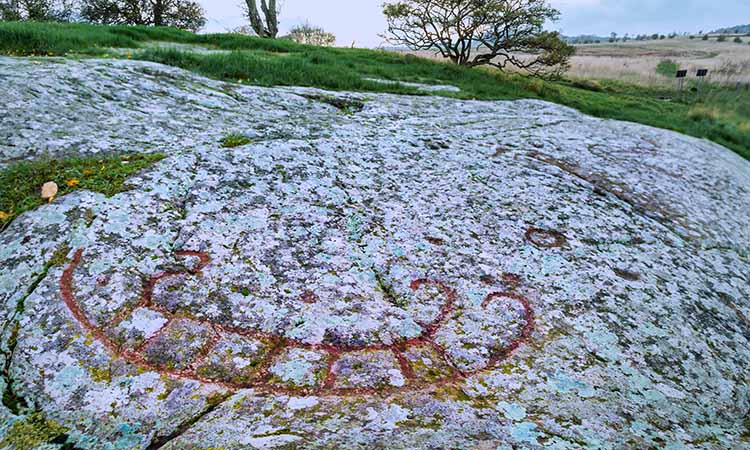Faith and rituals: The ship as the chariot of the sun
When people in prehistoric times created images, it was almost always for mythical or religious purposes.
The individual rock carvings may seem silent, but when we consider the carvings in conjunction with other finds, we begin to understand how the ships might have had a mythical significance.
Many researchers believe that Bronze Age people viewed ships as the sun’s means of transport across the sky, aided by animals such as horses and other symbols. This symbolism could also apply to the journey of the dead in the afterlife.
The power of the rock: The secret of the bowl carvings
Throughout Bornholm, wherever Bronze Age people lived or cultivated the land, they engraved images of bowls on the stones and cliffs. These small, round indentations have fascinated archaeologists and researchers for many years, but their meaning is still shrouded in mystery. Many believe that the bowl carvings had a ritual function, possibly linked to fertility or cultivation of the soil. Marking the ancient rock may have had a symbolic significance, but we can only guess at the meaning today.
Small bowl carvings have been found on three early Bronze Age monoliths in the protected nature area of Gryet near Nexø.
Bowl carvings are small, round indentations, typically 4–5 cm wide and 1–10 mm deep. Hundreds of bowl carvings can be found at one location, occasionally forming rows or patterns, but most often they are randomly scattered.
The very act of carving the ancient rock may have had its own magic. And the carvings have remained in place to this day!

Sketch of bowl carvings – please note that the rock carvings on Bornholm are no longer being sketched.
Madsebakke near Allinge: Denmark’s largest rock carving area
Madsebakke is home to Denmark’s largest rock carving area, located just north of Allinge in North Bornholm. The carvings date back to the later part of the Bronze Age, and are more than 2,500 years old. They are unlikely to have been created at the same time; there are probably about 400 years between the oldest and the youngest images. Pits with fire-blackened stones and traces of stone paving have been found near the cliff.
Archaeologists believe that Madsebakke once served as a sanctuary for people in the surrounding area. Perhaps it was also significant to an even wider area. The rock carvings were probably created as part of more extensive rituals, and we can only guess at what these involved, but possible examples include sacrifices, sacred meals, music, dance and exorcism.
Two other cliffs just 100 metres from Madsebakke also featured rock carvings. Unfortunately, these cliffs were blown to pieces in 1890, at a time when granite was being mined in many of the small quarries in North Bornholm. The same fate would probably have befallen Madsebakke if the rock had not been of poor quality!
One of the most enthusiastic amateur archaeologists on Bornholm at the time, schoolteacher L. Petersen from Allinge, managed to make sketches of both carvings. They show the usual type of ships, but also the only clear human figure identified on Bornholm. Together, the three cliffs have formed Bornholm’s most distinctive complex of rock carvings. There are also many other cliffs with rock carvings located within a radius of 1–2 kilometres.

